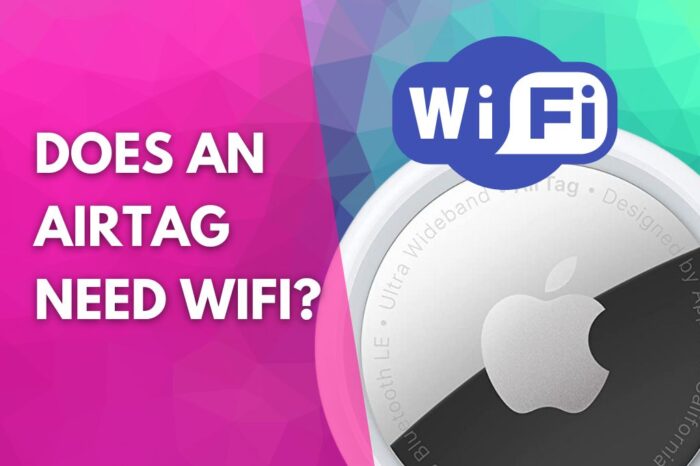Apple AirTags makes it super easy to find and track stuff like your keys, wallets, luggage, backpacks, and more.
If you’re new to AirTags, or perhaps considering buying some, one question you might be curious about is, does an AirTag need Wifi? Fear not because I have the answer in this article.
AirTags don’t need WiFi. They rely on Bluetooth to communicate with nearby Apple devices that are within a range of about 33 feet (10 meters).
In this article, I explore does an AirTag need Wifi to work, how does an AirTag work without WiFi, and much more.

Does An AirTag Need WiFi To Work?
An AirTag does not need Wifi, nor an internet connection to track the location of your things. However, an AirTag relies on the Find My app to display the location of your things. To enjoy the best app experience, you’ll need to turn your WiFi your on.

Rather than using WiFi, AirTags communicate using Bluetooth signals. Bluetooth works at its best when there is a clear line of sight. And since AirTags do not use a cellular service, you should know that obstacles such as buildings, walls, and metal can have an impact on how effective and strong a Bluetooth signal is.
How Does An AirTag Work Without WiFi?
An AirTag works without WiFi by send anonymous, secure Bluetooth signals to nearby Apple devices on the Find My network. These devices then send the AirTag’s location to iCloud so the AirTag can be seen on the Find My app.

If an AirTag is no longer within Bluetooth range of your device, it will leverage other Apple Bluetooth devices on the Apple Find My network and use those devices to broadcast its location.
If your AirTag is close to you, your Apple device, using Precision Finding, will lead you straight to it. Precision Finding uses Ultra Wideband technology to provide spacial and directional information on supported Apple devices.

However, if your AirTag is not near, your AirTag can also be put into Lost Mode, just like other Apple products. When your AirTag has been found by other Apple devices close by, you will immediately receive a notification of its whereabouts.
Frequently Asked Questions
Hopefully, I have answered all of your questions on, does an AirTag need WiFi. However, you may still have other questions surrounding Apple AirTags. If you do, below, I answer some common frequently asked questions or check out one of my other articles like best AirTag ideas.
Do AirTags work offline?
Do AirTags use cellular data?
Does an AirTag use Ultra Wideband?
Can you disable an AirTag?
Does an AirTag connect to other iPhones?
Final Thoughts On Does An AirTag Need WiFi
So, in conclusion. Does an AirTag need WiFi? No. An AirTag does not need WiFi to track things. AirTags communicate with other nearby Apple devices using Bluetooth. However, to view an AirTag’s location, you will need to use the Find My app, and for the best experience possible, you will want to turn your WiFi on for that.

